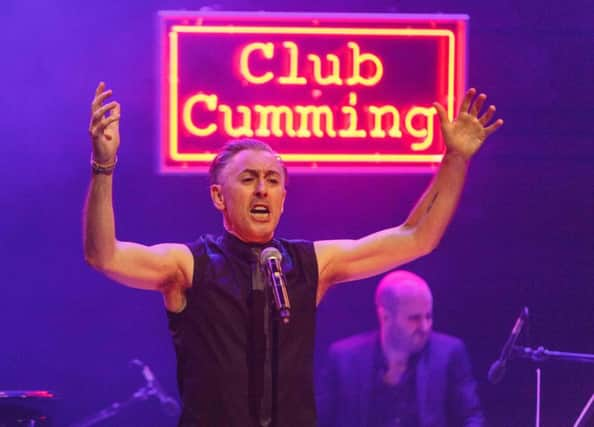Brian Ferguson: Culture events in historic buildings offer hope


So frequent had visits to his Club Cumming nights become that one member of staff at the Edinburgh International Festival had taken to calling me “Stagedoor Johnny”. When I found myself shaking hands in a corridor with guest star turn “Jesus L’Oreal” shortly before he took to the stage I could see he had a point.
The 19th century gothic tower has been truly transformed over the last month by Cumming, his bandmates and merry band of admirers, drawn to the Lawnmarket from the other festival sites in ever-expanding numbers.
Advertisement
Hide AdAdvertisement
Hide AdBy the time The Proclaimers’ 500 Miles had signalled a final rousing farewell from Cumming, at least for this year, it felt that the reinvention of the building, if not the entire EIF, was complete.
It was the second evening in a row that the classic Scottish party anthem seemed to rock the very foundations of the space I was in.
Not so long ago, one of the hottest tickets in August was the annual summer party in the grand gallery of the National Museum of Scotland. A rare opportunity of after-hours revelry in the Victorian attraction, it was a strict invite-only affair that drew in the great and good of Edinburgh like a magnet.
Memorable though those grand and exclusive occasions were, they were a far cry from the regular night-time events now staged in that venue, including three Friday Night Takeover events during the Fringe. The grand finale at the last of these saw the cast of Captivate Theatre’s Sunshine on Leith spark mass singalongs of The Proclaimers’ hits throughout the grand gallery.
This year also saw the museum help create one of the most significant additions to the Fringe landscape by allowing Gilded Balloon to expand into its auditorium.
The innovations at The Hub and the museum have shown the huge untapped potential for hosting cultural events in historic buildings.
There are undoubted logistical challenges in opening both up to hundreds of revellers every evening – especially when The Hub has the Tattoo on its doorstep and the museum has precious collections to protect. The breadth and scale of events staged on these sites this month would, frankly, have been unheard of a decade ago.
Their undoubted success offers hope for the future after a month which has felt like a tricky transition period hanging for the festivals in the face of competition from the Rio Olympics.
Advertisement
Hide AdAdvertisement
Hide AdThe ongoing building work in Bristo Square and the McEwan Hall have badly affected this normally bustling hub of Fringe activity. But if all goes according to plan, both will have a major part to play in the 70th anniversary Fringe in 2017.
Some careful thought will clearly need to go into the future of the Assembly Rooms after the lukewarm reception given to its new digital festival and the sparsely-populated arena in George Street. I cannot help but wonder if a takeover by the well-resourced EIF would provide the best long-term artistic solution for the building and its owners, the city council.
One of the big success stories of the Fringe was at Summerhall, where ten Scotsman Fringe First Awards were snapped up by shows helped ticket sales soar around a third on last year.
Questions over where the next Summerhall may emerge from are beginning to focus on the city’s waterfront, where hopes are high that the dreadfully-neglected Leith Theatre building will be back in the festivals fray after more than 25 years for that 70th anniversary.